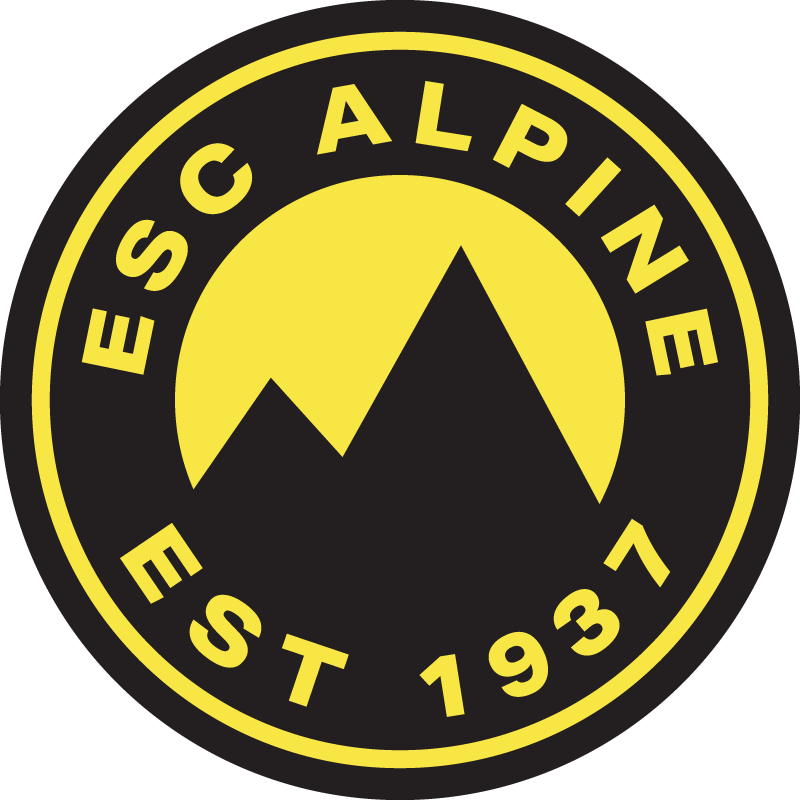This guide is a quick overview to help in selection of equipment. For more in depth information please speak with any of the Senior Coaching Team! Remember….race equipment is not available at every sporting goods store.
Sundance Ski & Snowboard is our Official Gear Sponsor.
4745 Gateway Blvd. Tel: 780.432.0711 web: sundanceskishop.com
Racer pricing may be available to our registered club members. Be sure to let them know that you are a member of ESC Alpine every time that you shop!
Skis
Race specific skis for all athletes and coaches when training with the Team.
“Twin tip”, park/pipe, freeride, and fat skis are not to be used during training. They can be used on mountain trips for free ski sessions.
NGSL athletes are encouraged to ski on a single pair of skis, preferably a “Slalom” ski as opposed to an “all event” ski.
Nothing older than 4 to 5 seasons old if purchasing used or older equipment. This is to ensure that the geometry of the ski (“sidecut”) is fairly current and that there is still some life left in the ski and edges.
U12, U14, U16+ athletes should have a pair of skis specific to each of the 2 main events - Slalom and Giant Slalom. It is not necessary, nor recommended, at this point to have a “train” and “race” pair of each ski.
Boots
Proper fit and flex are essential for success in ski racing - Work with a good boot fitter (not just any salesperson) at one of the recommended retailers and/or consult the Senior Coaching Team.
All athletes are recommended to have 4-buckle (or 3 on very small sizes), overlap style race boots. However, younger participants (U6) may not be able to find buckle boots in their size.
The concept of a very tight “race fit” with toes scrunched into the end of the boot is old-school thinking. A boot that is too short compromises both balance and circulation.
Younger athletes will find it difficult to assess and communicate what they are feeling inside of a boot, especially if they are not used to race boots. A good visual assessment can be gained by removing the liner from the shell, then removing the insole from the liner.
Proper ski socks are required for proper boot fit. Only one pair of socks should be worn. The use of multiple socks results in twists and creases that cause sore spots and decreased circulation. Dry socks and boots are key for warmth.
Athletes U12 and older should expect to have at least some custom work done to their boots, including cuff alignment, punching sore spots, custom footbeds, etc. Your coaches can help to assess your needs.
Poles
All athletes (including U6!) in the ESC Alpine program are required to have ski poles.
The top of the grip should be at the height of the bottom of the sternum (xyphoid process).
Straight poles only for NGSL - no curved/“GS” poles please!
Poles must have baskets in good condition in order to participate at events. Wrapping a thin strip of duct tape directly under the basket can help keep it from being popped off unexpectedly.
Helmets
All athletes should have hard-ear helmets - U6 can use soft ears if a properly fitting hard ear cannot be found.
All helmets must be ski-specific - no bike or hockey helmets.
Athletes U12 and older must have a helmet that displays the FIS “RH2013” sticker on the outer shell.
Do not buy used helmets!
Do not use a helmet for more than 3 seasons at the most. This is a safety issue. All athletes and coaches in the ESC Alpine program are required to wear ski-specific, certified and approved helmets.
Helmets should be snug, but not painful, and not move around on the athlete’s head when properly adjusted.
Goggles
Look for “anti-fog” lenses.
Goggles must be worn at all times during training.
Goggles should fit well inside the athlete’s helmet, with no gaps at the sides or between the helmet and the top of the goggles.
Keep lenses free from scratches by using a goggle bag or case for transporting.
Other Equipment - U12, U14, U16+
U12, U14, U16+athletes are required to have additional equipment, predominantly for slalom training. Equipment includes:
Chin guard for your helmet (mandatory - Slalom only).
Pole guards to protect hands (Slalom).
Shin guards (Slalom).
Two pairs of poles are recommended to eliminate the need to continually put on/take off pole guards.
Back protector is now mandatory for GS, Ski Cross, Super G. Here are the guidelines for back protectors:
The back protector must adapt to the anatomical bend of the athlete’s spine and lie flat against the body.
The top edge of the back protector must be situated in the area of the spinal column and may not go above the 7th cervical vertebrae (C7).
The maximum thickness must be in the middle part and may not exceed 45 mm; the thickness reduces at the edges of the back protector.
Designs with the view to improve aerodynamic properties are forbidden.
The back protector must be worn underneath the competition suit.

